Talk about cramming everything into a tiny space! With the launch of the Asus Zenfone 8 this Wednesday, May 12, with an asking price of $599, Asus wants to offer a flagship that is more reserved and reasonable than the extremely high-end monsters from the likes of Samsung and Oppo. Sporting a compact form factor like the iPhone 12 Mini will carry its fair share of compromises, but let us see what my initial impressions about the Asus Zenfone 8 are this hands-on.
Good
- ✓Compact and very sleek design
- ✓120Hz AMOLED display
- ✓Powerful Snapdragon 888 chipset
- ✓Competitive price for a flagship
- ✓IP68 rating
- ✓3.5mm jack with LDAC codec support
Bad
- ✕Camera module lacks versatility
- ✕Questionable long-term software support
- ✕30-watts Fast Charging support
- ✕4,000 mAh battery
My brief opinion of the Asus Zenfone 8
The Asus Zenfone 8 will arrive in three memory configurations: 8/128 GB, 8/256 GB, and 16/256 GB. According with the company, the US price is still being finalized, but it will cost somewhere between $599 and $799.
$599 was the asking price of the OnePlus 8T when it was first released in October 2020. Hence, Asus has no illusions that it has positioned the Zenfone 8 in flagship territory, albeit at a price point that even Xiaomi is unable to match with its Xiaomi Mi 11.
But the quality/price ratio is, strangely enough, not the key argument that Asus wanted to drive home. Instead, the manufacturer wanted to focus on the compact form factor of the Zenfone 8. Gone is the flip camera rotating module that took up too much space, which is now reserved for its "Pro" version, the Zenfone 8 Flip.
Gone also are the virtually useless camera sensors such as a 2 MP macro whose only purpose was to artificially inflate the specifications sheet. One of the compromises made to accommodate its small form factor? A very small 4,000 mAh battery that is inadequate for a flagship in 2021 - at least on paper.
In short, Asus has made some compromises when it comes to concocting a high-end smartphone. And its software support is historically unimpressive even for its flagships, although the manufacturer does not seem too perturbed by it and even justifies their lack of long-term support.
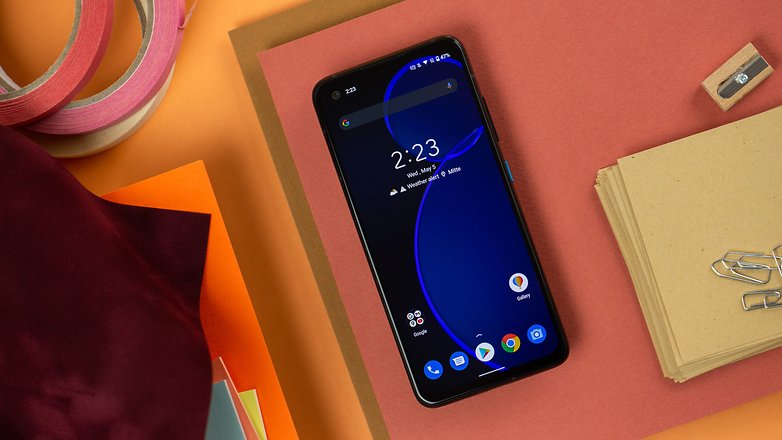
A compact, sleek design that is reminiscent of Google's Pixel
The Asus Zenfone 8 looks a lot like a Google Pixel. It's slightly less compact than a Pixel 5 (the Zenfone 8's dimensions are 148 x 68.5 x 8.9 mm and 169 grams while the Pixel 5 measures 144.7 x 70.4 x 8 mm and weighs 151 grams). But it's clearly lightweight against the behemoths in the high-end Android market that tip the scales at 200 grams and more.
The flat AMOLED display is pierced by a punch-hole camera at the top left. Surrounding by rounded corners, the fairly noticeable chin, matte glass back, and the unassuming dual camera module, I found it easy to hold in my hand securely just like the latest generation of Pixel handsets.
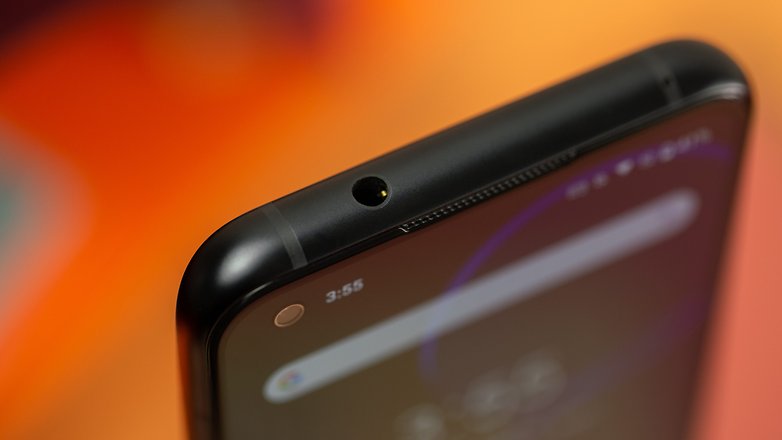
I've already written a lot about this matter, but this format obviously has the merit of maximizing the "reachable area" for your fingers, a fact that more and more manufacturers take into account even in their user interface. In short, the idea is to facilitate one-handed use. For this matter, Asus has hit the nail on the head.

As for the display itself, I'll have to use it for a longer period of time, but the smoothness achieved via the 120 Hz adaptive refresh rate is very pleasant to the eyes, even on a "small" display.
The Full HD+ panel offers a maximum brightness of 1,100 nits, which is not really extraordinary, and a touch sampling rate of 240 Hz that is suitable for gaming. These are considered "normal" specifications within such a price range. I found the colors in default mode to be a bit dull but once I switched to standard mode, the colorimetry satisfied me.

Overall, the Zenfone 8 does follow the footsteps of Apple when it comes to a compact smartphone form factor. But this is a good thing that no other Android manufacturer has implemented so far. Not content with being compact, the Asus Zenfone 8 is also very classy looking with a refined design, sporting an excellent grip, and a well-calibrated screen that can be used with one hand!
The power of the Snapdragon 888 SoC
Like every other Android flagship in 2021, the Asus Zenfone 8 is powered by the Qualcomm Snapdragon 888 SoC. In this hands-on, Asus loaned me the highest-end model which carries 16 GB of LPDDR 5 RAM and 256 GB of UFS 3.1 storage!
On paper, the Zenfone 8 outperformed its direct competitors like the OnePlus 9 or the Xiaomi Mi 11 in terms of pure benchmark scores. Unsurprisingly, the smartphone will be able to handle all types of usage, from productivity to gaming, without any issues.
Asus Zenfone 8
| Benchmarks | Asus Zenfone 8 | OnePlus 9 | Xiaomi Mi 11 | OnePlus 8T |
|---|---|---|---|---|
| 3D Mark Wild Life | 5753 | 5683 | 5702 | 3812 |
| 3D Mark Wild Life Stress Test | 5825 | 5716 | 5697 | 3792 |
| Geekbench 5 (Single / Multi) | 1124/3738 |
1119/3657 |
1085/3490 |
887/3113 |
|
PassMark Memory |
32247 | 32124 | 26.333 | 27766 |
|
PassMark disk |
112318 | 115311 | 120.430 | 98574 |
I'll have to test the performance of the Asus Zenfone 8 more when it comes to gaming, especially in terms of frame rate stability and thermal throttling. I quickly ran 3DMark's Wild Life and Wild Life Stress Test benchmarks that simulate an intense 1-minute and 20-minute gaming session, respectively.
In the 1-minute test, the Zenfone 8 did not heat up at all, maintaining a frame rate that was always above the 30 FPS mark on average.
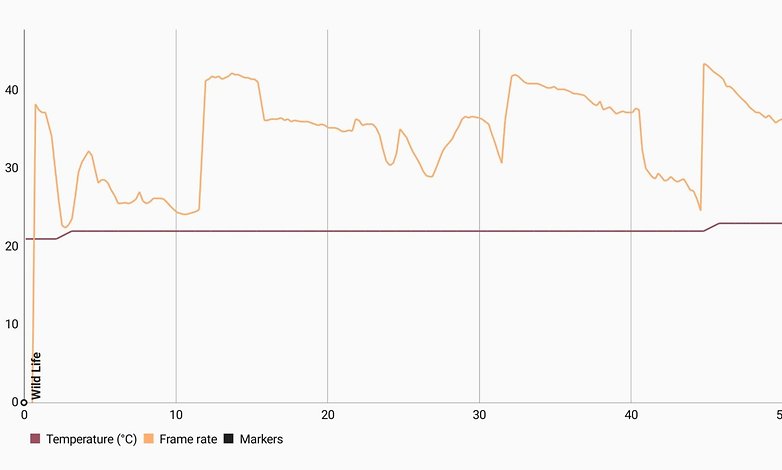
On the 20-minute test, the smartphone heated up a lot, hitting the 50 °C mark. I couldn't hold it in my hand for more than a few seconds at that point. Stability saw a nosedive in the second half of the test, but I'll have to keep an eye on the overheating in my upcoming review.
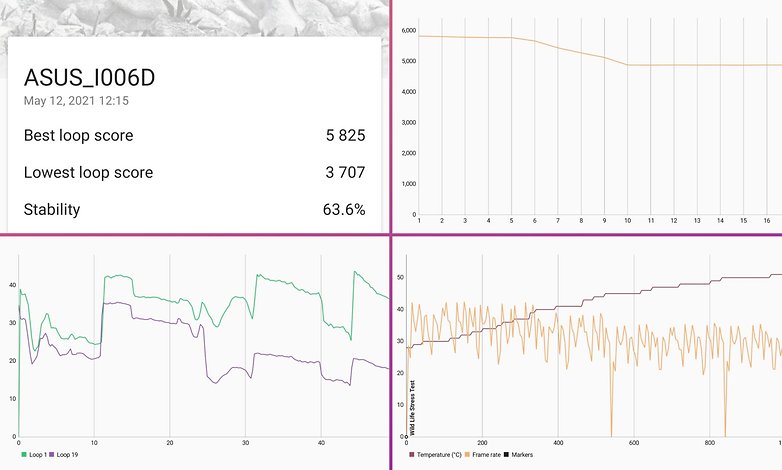
Overall, my first impressions of the performance of the Asus Zenfone 8 were positive; I was pleasantly surprised to see it outperform more expensive rivals in terms of raw power. I remain wary of its tendency to overheat, however.
A dual 64+12 MP camera module that's a little too conservative
It's not just in terms of design that the Zenfone 8 looks like a Pixel. Like Google's smartphones, the Asus Zenfone 8 makes do with two lenses - sporting a wide-angle and ultra wide-angle lens. The only exception is, Google has far more expertise in this area, of which I found the camera experience to be rather limited with the Zenfone 8.
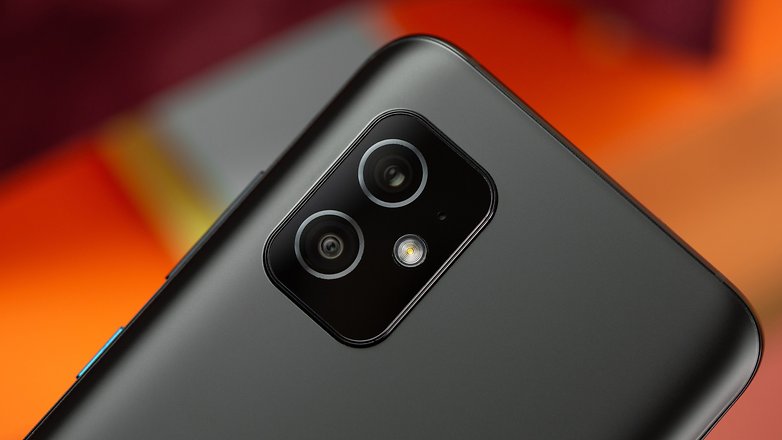
Asus Zenfone 8
| Lenses | Specs |
|---|---|
| 64 MP main lens | Sony IMX 686, 1/1.7-inch sensor size, f/1.8 aperture, 2x1 OCL, OIS |
| 12 MP Ultra Wide Angle Lens | Sony IXM 363, 1/2.55-inch sensor size, f/2.2 aperture, 113° FOV Dual PDAF, EIS |
| 12 MP Selfie | Sony IXM 663, 1/2.93-inch sensor size, f/2.45 aperture, Dual PDAF |
I'm not going to make a definitive statement about the photo quality and will only reveal a few shots taken on the fly earlier this week. During the day and under good lighting conditions, the main sensor offers a good level of detail, a wide dyanmic range, and rather natural colorimetry.
The ultra wide angle has too limited a FOV and the distortion at the edges is noticeable. I noticed a lack of detail on the most complex elements of my shots so far (foliage remains very blurry).

When it comes to zoom performance, the Zenfone 8 is deprived of a dedicated telephoto lens and so it boils down to cropping your image or going through a digital magnification process via the main camera sensor. Obviously, we should not expect miracles beyond the 2x mark, with a maximum magnification level of 8x.


I won't reveal everything either and will reserve night shots for the full review. Overall, the Zenfone 8's camera capabilities are clearly not its best selling point. We quickly find ourselves limited by this camera configuration that lacks a telephoto lens and has a tight ultra wide-angle performance.
A tiny 4,000 mAh battery
The Asus Zenfone 8 comes with a 4,000 mAh battery that can be recharged via its 30-Watt charger. I won't comment on the battery life since I still need to run some benchmarks, not to mention I haven't used the smartphone long enough to come up with a justified conclusion.
But I find that on paper, a 4000 mAh capacity for a flagship to be rather low. The 30-watts fast charging capability is also slower compared to what its competitors offer, especially since Asus does have better fast charging capability.
Like the ROG Phone 5, the Zenfone 8's battery uses STP (Specific Tab Process) technology, which charges the battery from the middle to the outside of the cell as opposed to from one end to the other. This reduces impedance
and temperature rise during discharge.
Asus promises that its 30W HyperCharge charger can charge the Zenfone 8's battery from 0-60% in 25 minutes, 0-80% in 38 minutes, and 0-100% in 1 hour and 20 minutes.
Asus Zenfone 8: Technical Specifications
Asus Zenfone 8
| Specs | Asus Zenfone 8 Flip |
|---|---|
| Processor | Qualcomm Snapdragon 888 |
| Memory |
|
| Expandable storage | No |
| Screen |
|
| Camera module |
|
| Video |
|
| Battery |
|
| OS | ZenUI 8 based on Android 11 |
| Audio |
|
| Connectivity | Wifi 6E / Bluetooth 5.2 / NFC / LTE / 5G / Dual SIM / Dual nano SIM |
| IP Certification | IP68 |
| Dimensions & Weight |
|
| Colors | Obsidian Black / Horizon Silver |
| Price | $599 |
Here are my initial impressions
My initial impressions of the Asus Zenfone 8 are quite positive. I really like the compact form factor as well as the design. But you can also see that Asus has made an effort to ensure that this compact form factor will not compromise the performance in other areas by too much.
However, miniaturization has its limits, and I have to say that the small 4,000 mAh battery worries me a bit for my full review. I hope that Asus has gone all out with charging optimizations and battery life preservation modes, but we will find that out soon.
The camera module didn't knock my socks off, either. I was impressed with the performance though, and for a smartphone that sells for $600, I find the form factor/performance compromise more than acceptable.
Asus does deliver any hyperbole with its Zenfone 8. It does not mask any compromises or includes unnecessary hardware like a 2 MP macro lens or depth sensor. While it does have its shortcomings and limitations, one thing that you have to bear in mind would be its software updates in the long run of which Asus has yet to gain a good account of itself in this department.
The model I was loaned carries the March security patch, and the manufacturer explained to me that it will only guarantee 2 years of security updates, without even mentioning anything about Android version updates. But I'll reconfirm all this in my full review that will be ready next week, so stay tuned!
Read More Open link https://ift.tt/2RUtFPC

0 Response to "Asus Zenfone 8 hands-on: Going against the grain"
Posting Komentar